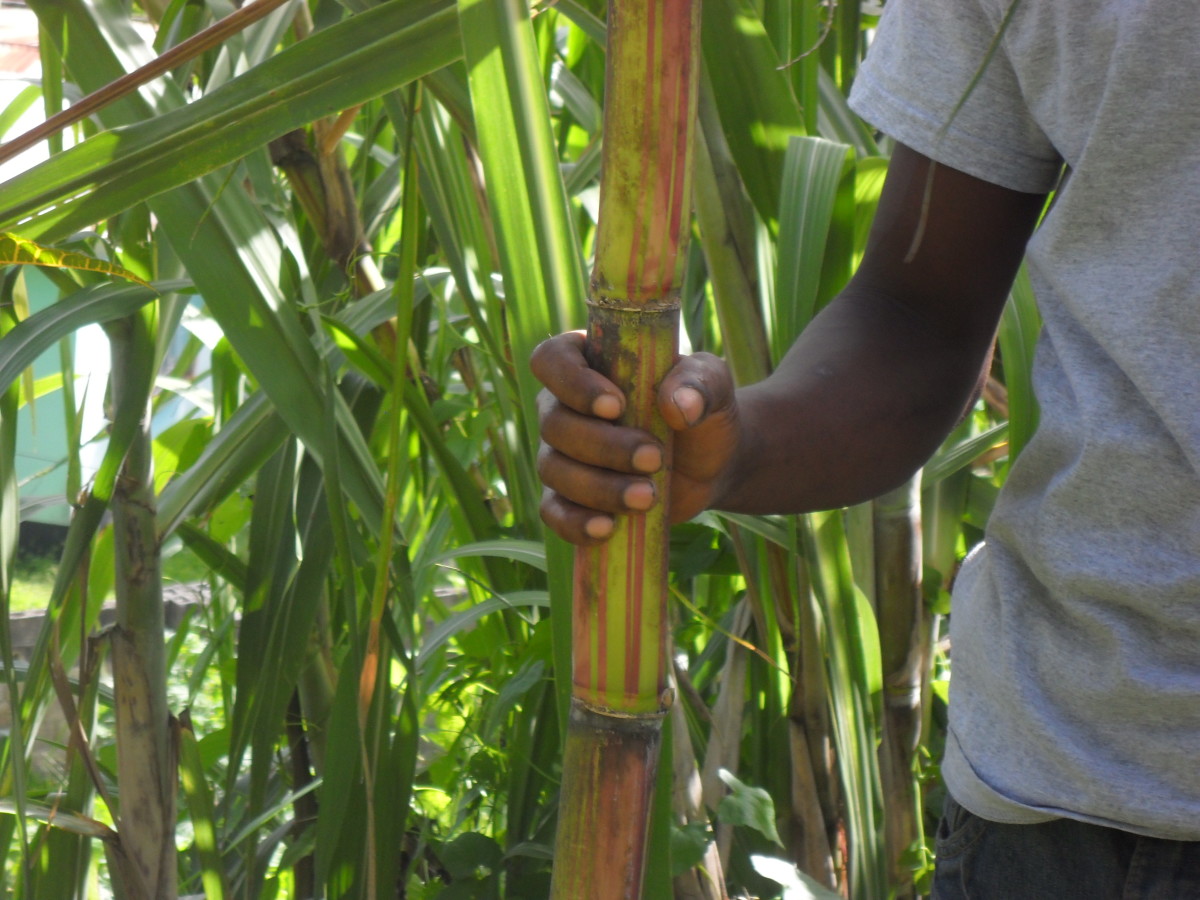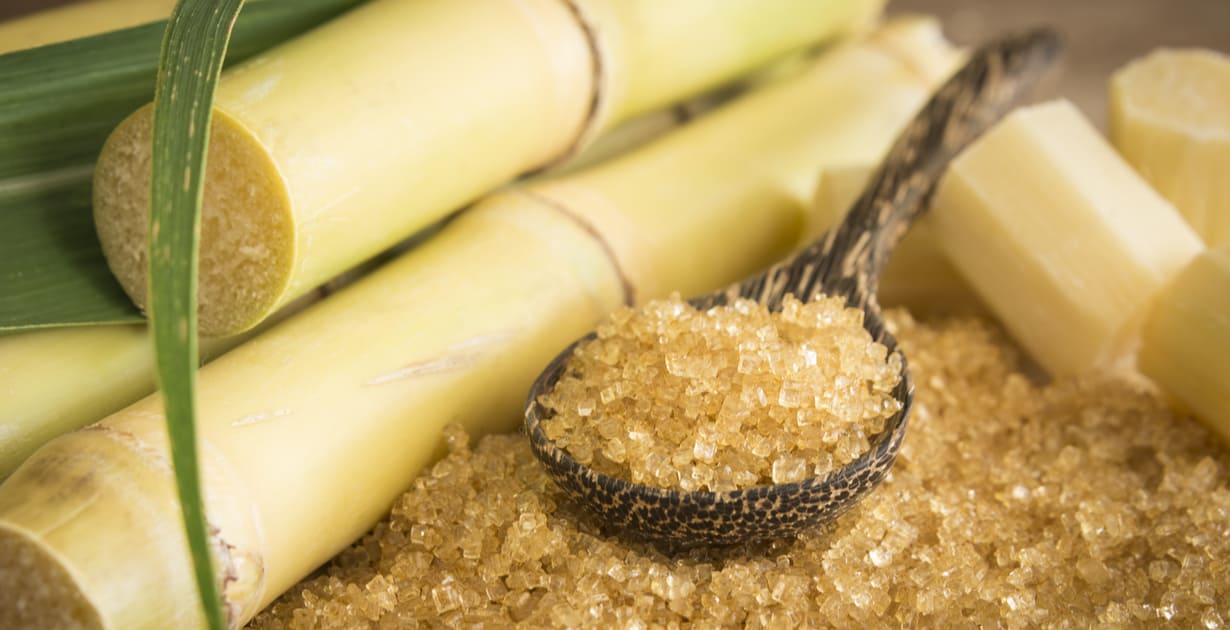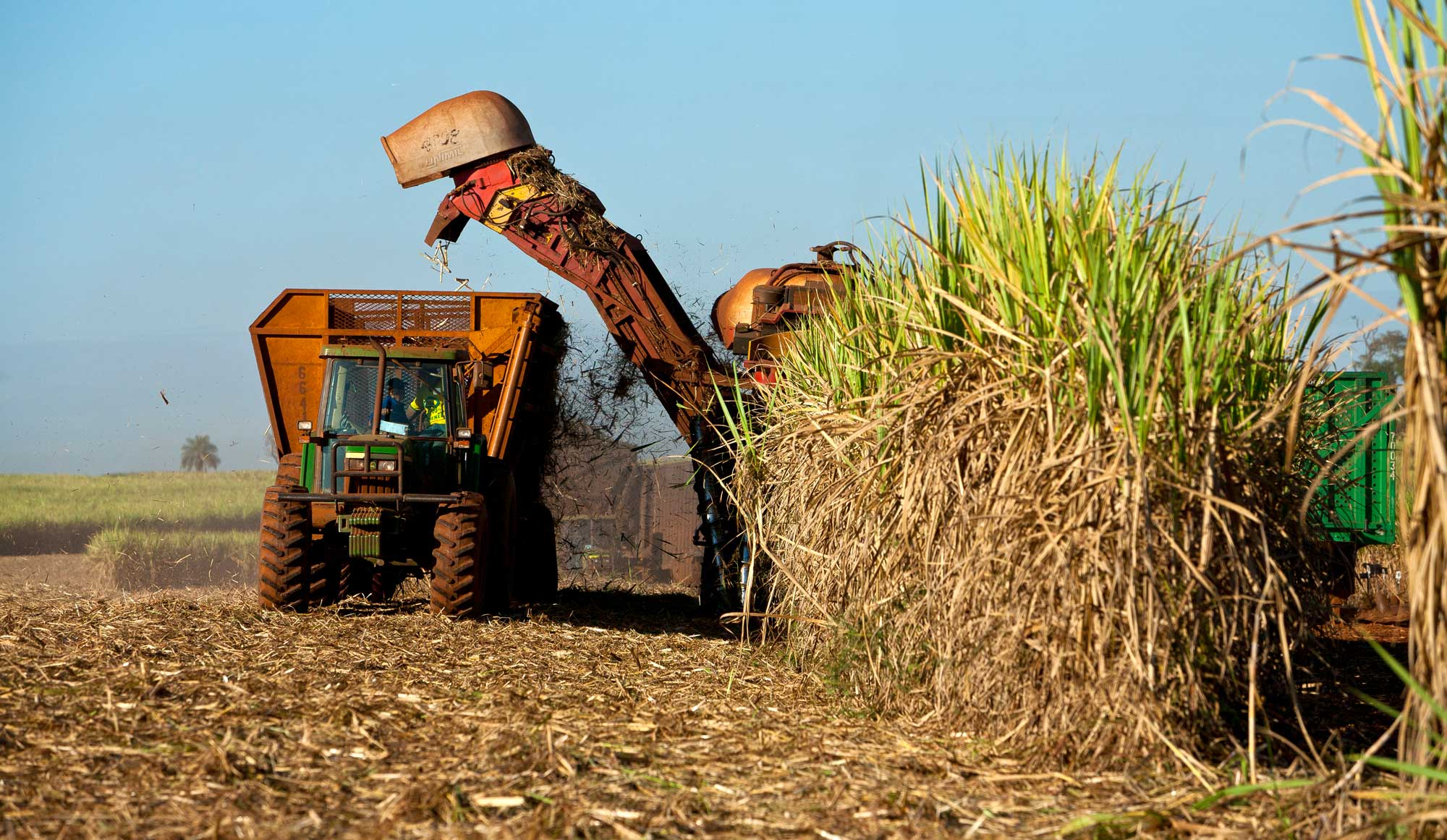Expert Insights on What Are Sugar Canes Used For in Energy and Fuel
Understanding How Sugar Canes Job: What Are Sugar Canes Made Use Of For in Food and Beyond?
Sugar canes are important to numerous aspects of both cooking and industrial techniques. Their flexibility enables them to be transformed into sweeteners, drinks, and also biofuels. As one checks out the journey from farming to processing, the diverse applications of sugar canes expose a complicated interaction between agriculture and sector. The effects of sugar cane production extend past mere utility, raising concerns about ecological sustainability and economic impact.

The History and Beginning of Sugar Canes
Typically taken for approved in contemporary diet regimens, the history and origin of sugar walking canes reveal an intricate trip that spans thousands of years. Belonging To Southeast Asia, sugar cane was initial grown around 8000 BCE, with its wonderful juice becoming highly valued by very early human beings. By the very first millennium advertisement, it spread to India, where it was improved into taken shape sugar, a significant advancement that changed its usage and trade. The intro of sugar walking stick to the Mediterranean occurred around the 7th century, many thanks to Arab investors, who recognized its economic potential.During the Age of Expedition, European homesteaders developed sugar vineyards in the Caribbean, substantially influencing worldwide profession. By the 17th century, sugar came to be a standard asset, fueling economies and influencing social structures. The story of sugar canes is intertwined with farming, commerce, and social exchanges, marking its relevance in forming modern economic systems and culinary methods.

Farming and Harvesting Practices
The cultivation and harvesting of sugar walking canes include a number of crucial techniques that figure out the top quality and yield of the crop - What Are Sugar Canes Used For. Crucial element consist of reliable dirt preparation strategies, precise growing approaches, and reliable collecting methods. Comprehending these practices is necessary for enhancing production and guaranteeing sustainability in sugar walking stick farming
Dirt Preparation Techniques
Reliable dirt prep work strategies are important for successful sugar walking cane farming, as they lay the structure for healthy and balanced development and optimal yield. The procedure starts with dirt testing to evaluate nutrient degrees and pH balance, enabling tailored amendments. Plowing and tilling are then utilized to aerate the dirt and break up compaction, enhancing origin infiltration. Including raw material, such as compost or well-rotted manure, improves soil fertility and structure. Additionally, proper drainage systems are crucial to avoid waterlogging, which can hinder walking stick development. Cover chopping may additionally be utilized to suppress weeds and boost soil health. These practices collectively assure that sugar walking cane has the most effective atmosphere to prosper, leading to durable plant wellness and increased efficiency.
Growing and Development
Successful planting and development practices are crucial for taking full advantage of the return of sugar walking cane. The procedure starts with choosing healthy seed canes, which are sections of mature stalks abundant in buds. These seed canes are typically grown in well-prepared dirt, ideally at a depth of 4 to 6 inches, making certain appropriate dampness and aeration. Sugar walking cane flourishes in warm climates with enough sunshine and requires consistent watering, especially throughout dry spells. Fertilization with potassium, phosphorus, and nitrogen is vital to advertise robust development. Weed control is additionally crucial, as competition can prevent growth. Normal surveillance of plant health and soil problems permits for prompt treatments, inevitably resulting in a successful crop that meets market needs.
Gathering Techniques
Harvesting sugar cane calls for careful preparation and implementation to assure maximum yield and high quality. Usually, the harvest takes place when the cane gets to perfect sugar web content, usually between 12 to 18 months after planting. There are 2 primary approaches: manual and mechanical harvesting. Hand-operated harvesting includes workers making use of machetes to reduce the stalks at ground degree, making certain minimal damage to the plant and dirt. In contrast, mechanical harvesting uses specialized equipments that cut, chop, and transfer the walking cane, enhancing performance and decreasing labor prices. Mechanical approaches can lead to greater soil compaction and loss of nutrients. No matter the technique, timely harvesting is important, as delays can lead to reduced sugar quality and raised vulnerability to diseases and pests.
Processing Strategies for Sugar Extraction
The processing of sugar walking stick is an important stage in sugar production, encompassing a number of vital methods - What Are Sugar Canes Used For. Harvested walking cane undergoes juicing and squashing to extract its sweet fluid. This juice then continues via filtration and condensation, transforming it right into the sugar most typically made use of today
Collecting Sugar Walking Stick
Sugar cane collecting marks a critical stage in the production process, where timing and method play necessary roles in optimizing yield. Typically, the harvest happens when sugar material goes to its height, which varies based upon climate and growth problems. Workers use specific devices or manual devices to cut the walking cane at the base, making sure marginal damage to the plant. Correct method is crucial; cutting too high can lower the quality and amount of the sugar extracted later on. After cutting, the walking cane has to be delivered quickly to processing centers to prevent spoilage and sugar degradation. The effectiveness of the harvesting process significantly influences the overall efficiency and profitability of sugar cane farming, making it an essential emphasis for producers.
Squashing and Juicing
Once sugar cane is collected, the next vital action entails squashing go to my blog and juicing to draw out the sweet liquid that includes sucrose. This process typically utilizes hefty machinery made to squash the stalks, breaking down the coarse framework and releasing the juice. Mills or rollers apply substantial stress, allowing the walking stick juice to spurt while separating the coarse deposit, called bagasse. When crushed, the walking stick is usually subjected to a series of pushing phases to make best use of juice extraction. The gathered juice is abundant in sugar and might have contaminations, which will certainly be attended to in later handling actions. Generally, juicing and crushing are important techniques that change harvested sugar walking stick right into a liquid kind appropriate for additional refinement.
Filtration and Condensation
Purification and crystallization are critical procedures in transforming raw cane juice into refined sugar. After drawing out juice from crushed sugar walking canes, the liquid includes pollutants such as plant fibers, healthy proteins, and minerals. To achieve purification, the juice undergoes explanation, where heat and lime are contributed to precipitate impurities, which are then eliminated. The cleared up juice is after that focused through dissipation to form a thick syrup.Next, condensation occurs, where sugar crystals form as the syrup cools. This process typically entails seeding the syrup with existing sugar crystals to advertise consistent development. The resulting crystals are divided from the continuing to be molasses via centrifugation, generating pure sugar. This refined look what i found product is after that dried and packaged for different culinary usages.
Culinary Uses of Sugar Canes
While frequently associated largely with sweeteners, sugar walking canes offer a flexible series of culinary applications beyond their function in sugar manufacturing. Fresh sugar walking cane can be juiced, yielding a wonderful, stimulating drink appreciated in many exotic areas. This juice works as a base for healthy smoothies and alcoholic drinks, including an unique taste profile.Additionally, sugar cane syrup, stemmed from condensing the juice, is utilized as a natural sugar in various meals, from marinates to treats. The syrup passes on a rich, caramel-like flavor, improving both pleasant and tasty recipes.In some foods, sugar walking stick stalks are smoked or roasted, providing a distinct great smoky taste that enhances vegetables and meats. Sugar cane can be included into treats, such as candies and puddings, where its sweet taste and fibrous appearance produce fascinating contrasts. Overall, sugar canes add to both ingenious and standard culinary creations across varied societies.
Industrial Applications Past Food
Past their cooking usages, sugar canes play a substantial function in numerous industrial applications, adding to fields such as bioenergy, paper production, and bioplastics. The coarse material of sugar walking cane is made use of in the production of biofuels, particularly ethanol, which offers as a renewable resource resource that lowers dependancy on fossil fuels. In the paper industry, bagasse, the coarse residue left after juice extraction, is refined into pulp for paper and cardboard production, promoting lasting practices by making use of waste. Additionally, innovations in bioplastic modern technology have resulted in the advancement of naturally degradable plastics originated from sugar walking cane, supplying an environment-friendly option to conventional petroleum-based plastics. These industrial applications not just boost the value of sugar walking sticks but additionally straighten with global movements towards sustainability and eco-friendly sources, highlighting their convenience past the cooking area.

The Environmental Impact of Sugar Walking Cane Manufacturing
The manufacturing of sugar walking cane, in spite of its countless industrial benefits, positions considerable environmental difficulties. Logging is often an effect, as large areas of land are cleared to grow sugar walking stick, causing environment loss and biodiversity decrease. Furthermore, the extensive farming methods associated with sugar walking cane growing can result in soil destruction and erosion. The heavy use of fertilizers and chemicals to maximize returns contributes to water pollution, adversely influencing water ecosystems.Moreover, sugar walking cane production is connected to increased greenhouse gas exhausts, especially through land-use changes and the burning of walking cane fields before harvest. These practices not only impact air quality however also add noticeably Look At This to climate change. In enhancement, the water-intensive nature of sugar cane farming places anxiety on regional water sources, affecting ecological communities and communities reliant on these products. Attending to these ecological effects is essential for lasting sugar cane production in the future.
Regularly Asked Concerns
Are There Health Advantages Associated With Consuming Sugar Walking Cane?
The inquiry of health and wellness benefits associated with sugar walking stick usage highlights potential benefits. Sugar walking cane might give hydration, important minerals, and anti-oxidants, yet small amounts is essential due to its all-natural sugar content and feasible wellness implications.
How Does Sugar Walking Stick Compare to Various Other Sugar Nutritionally?

Sugar walking stick provides all-natural sweet taste, mostly making up sucrose, while other sweeteners differ in make-up and calorie material. Contrasted to fabricated options, sugar walking stick supplies vitamins and minerals, though it remains high in calories and carbs.
Can Sugar Walking Stick Be Grown in Non-Tropical Areas?
Sugar walking cane mainly prospers in exotic environments, requiring warm temperatures and plentiful rainfall. While some non-tropical regions attempt growing, success is limited as a result of insufficient warmth and expanding seasons, making large-scale production testing.
What Are the Typical Pests or Diseases Affecting Sugar Canes?
Usual parasites impacting sugar walking canes include the sugarcane borer and aphids, while conditions like leaf scald and red rot posture considerable threats. Efficient administration methods are important for keeping healthy and balanced sugar cane crops and taking full advantage of returns.
Just How Does Sugar Walking Cane Influence Resident Economies?
The influence of sugar cane on neighborhood economies is considerable, giving job opportunity, boosting agricultural industries, and adding to exports. Its cultivation enhances and supports local services area development via raised earnings and infrastructure enhancements. Native to Southeast Asia, sugar walking cane was initial grown around 8000 BCE, with its pleasant juice coming to be extremely valued by early worlds. The introduction of sugar cane to the Mediterranean happened around the 7th century, thanks to Arab traders, who recognized its economic potential.During the Age of Exploration, European colonists established sugar haciendas in the Caribbean, substantially affecting global trade. The processing of sugar walking cane is a critical phase in sugar manufacturing, incorporating several key methods. While frequently associated primarily with sugar, sugar canes supply a versatile array of culinary applications beyond their duty in sugar manufacturing. The heavy use of fertilizers and chemicals to take full advantage of yields adds to water contamination, adversely impacting water ecosystems.Moreover, sugar walking cane manufacturing is linked to increased greenhouse gas discharges, particularly via land-use modifications and the burning of cane fields prior to harvest.